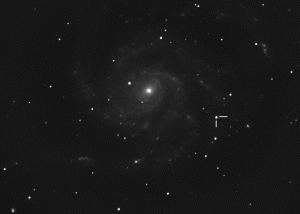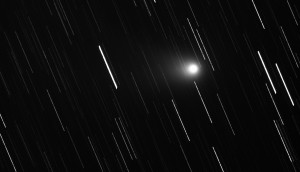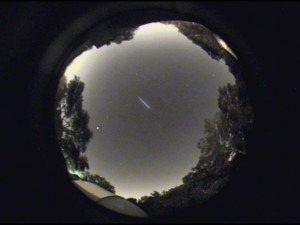On 24 Aug 2011 the Palomar Tansient Factory detected a ‘star’ that wasn’t there the night before. What the fully automated system found was the closest type Ia supernova in decades. As the image below shows, the supernova is in Ursa Major’s Pinwheel galaxy (M 101). (Click the thumbnail to blink the supernova.)
 There are a couple of things that make this discovery special. The first is how ‘young’ the supernova is. Since the galaxy was imaged the night before and nothing was visible at that location, the supernova was caught within 24 hours of ignition. Subsequent imagery shows the supernova is, as expected, continuing to brighten.
There are a couple of things that make this discovery special. The first is how ‘young’ the supernova is. Since the galaxy was imaged the night before and nothing was visible at that location, the supernova was caught within 24 hours of ignition. Subsequent imagery shows the supernova is, as expected, continuing to brighten.
The second thing that makes it special is its proximity. The Pinwheel galaxy is only 21 million light years away. The relatively close distance and the resultant increase in apparent brightness (the discovery image measured a 17.2) brings the object into the range of many more scientific instruments. More telescopes equals more coverage. Quickly changing events, such as associated with a supernova, could be missed waiting for the earth to rotate a large enough telescope into view.
I took the supernova image Friday night. It is a stack of nine 300 second exposures. The stars magnitude at that time was 13.34. The other image is an archive image of M 101 that I took in May 2009. It is also a stack of nine 300 second exposures.

